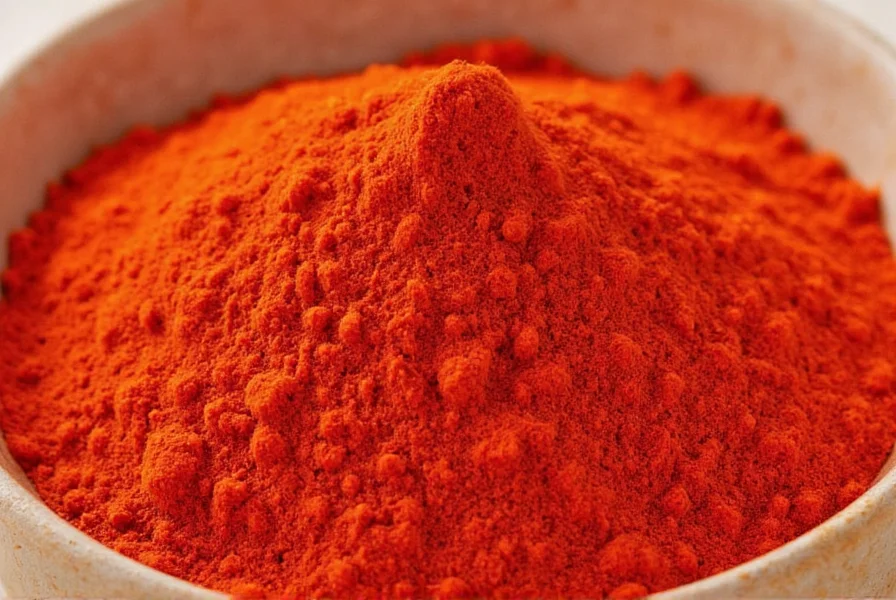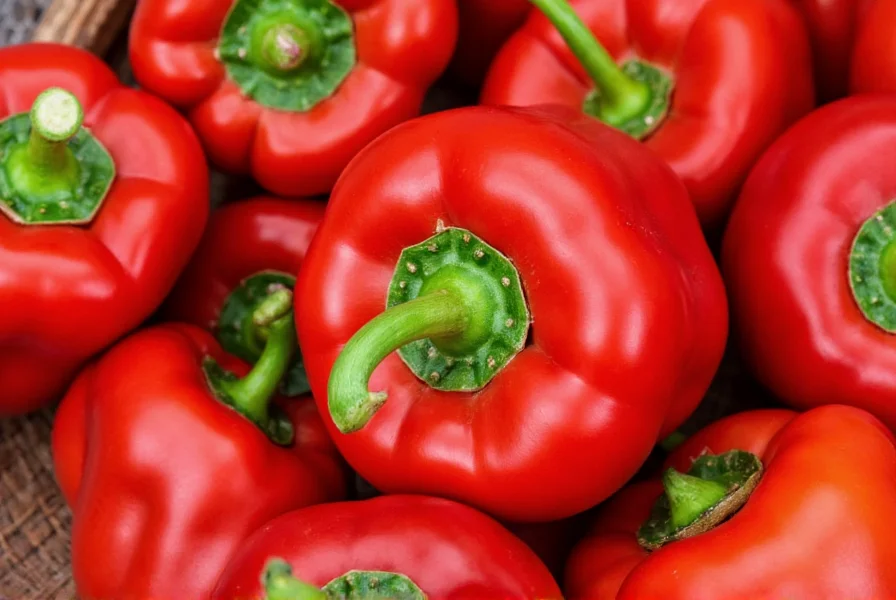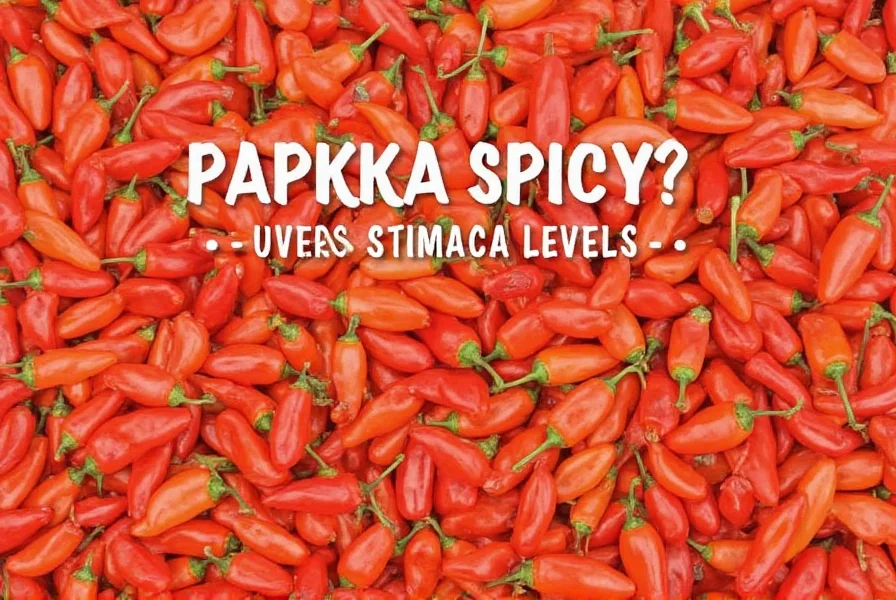When exploring is paprika spicy, the answer isn't straightforward because paprika encompasses multiple varieties with dramatically different heat profiles. This vibrant red spice, made from ground peppers in the Capsicum annuum family, serves as both a flavor enhancer and coloring agent in cuisines worldwide—but its spiciness level depends entirely on which peppers were used in production.
Understanding Paprika Varieties and Their Heat Levels
Paprika isn't a single uniform spice but rather a category that includes several distinct types. The confusion around is Hungarian paprika spicy or whether smoked paprika is spicy stems from these variations:
| Paprika Type | Origin | Scoville Heat Units | Flavor Profile |
|---|---|---|---|
| Sweet Paprika | Hungary, Spain, California | 0-100 SHU | Bell pepper-like, fruity, no heat |
| Hot Paprika | Hungary | 5,000-15,000 SHU | Peppery with noticeable heat |
| Smoked Paprika (Pimentón) | Spain | 0-10,000 SHU | Wood-smoked flavor, mild to medium heat |
| Sweet Hungarian | Hungary | 0-500 SHU | Earthy, slightly sweet |
The critical distinction lies between sweet, hot, and smoked varieties. Most grocery store paprika labeled simply “paprika” is the sweet variety, which contains zero capsaicin—the compound responsible for spiciness in peppers. This explains why many people wonder what makes paprika spicy when their experience with the spice has been completely mild.

How Paprika Compares to Other Common Spices
Understanding how spicy is paprika compared to cayenne puts its heat level in perspective. While cayenne pepper averages 30,000-50,000 Scoville units, even the hottest paprika varieties max out around 15,000 units. For reference:
- Sweet paprika: 0-100 SHU (comparable to bell peppers)
- Hot Hungarian paprika: 5,000-15,000 SHU (similar to jalapeños)
- Cayenne pepper: 30,000-50,000 SHU
- Red pepper flakes: 15,000-25,000 SHU
This comparison clarifies why recipes often use paprika for color and subtle flavor rather than significant heat. When someone asks is smoked paprika spicy, the answer depends on whether it's labeled “sweet,” “mild,” or “hot”—Spanish pimentón comes in all three varieties.
Factors That Determine Paprika's Heat Level
Several elements influence whether your paprika will deliver heat:
Pepper Selection
Sweet paprika uses non-pungent varieties like capsicum annuum var. grossum (bell peppers), while hot paprika incorporates spicier cultivars. Hungarian hot paprika specifically uses capsicum annuum var. longum, which contains capsaicin.
Processing Method
Traditional Hungarian paprika undergoes a unique process where peppers are roasted over oak fires before grinding, which can slightly reduce heat while enhancing flavor complexity. Spanish smoked paprika (pimentón) gets its distinctive flavor from smoking over oak or holm oak wood.
Geographical Origin
Hungarian paprika regulations classify varieties into six categories, from extramelody (sweetest) to erős (hottest). Spanish paprika (pimentón) categorizes as dulce (sweet), agridulce (bittersweet), or picante (spicy). Knowing your paprika heat level chart by origin helps predict spiciness.

Practical Guidance for Using Paprika
When selecting paprika, check the label for heat indicators. Terms like “sweet,” “mild,” “medium,” or “hot” provide crucial information. Hungarian paprika often includes specific Hungarian terms:
- Edés = hot
- Feledes = medium hot
- Keléményes = sweet/mild
If you're wondering is Hungarian paprika spicy, traditional Hungarian varieties range from sweet to hot, but the most commonly exported types are moderately spicy. For authentic Hungarian goulash, chefs typically use feledes (medium hot) paprika.
Storage matters too—paprika loses potency when exposed to light and air. Keep it in an airtight container in a cool, dark place, and replace every 6-12 months for optimal flavor. Fresh paprika should have a vibrant color and aromatic scent; faded color or lack of aroma indicates it's past its prime.
Common Misconceptions About Paprika Heat
Many home cooks mistakenly believe all paprika is interchangeable. The question sweet paprika vs hot paprika highlights this confusion. These are fundamentally different products:
- Sweet paprika provides color and subtle pepper flavor without heat
- Hot paprika delivers noticeable spiciness along with color
- Smoked paprika offers a distinct wood-smoked flavor regardless of heat level
Substituting one for another can dramatically alter a dish's outcome. If a recipe calls for sweet paprika but you use hot paprika instead, you'll introduce unexpected heat. Conversely, using sweet paprika when hot is specified will result in a dish lacking the intended spiciness.
Conclusion: Is Paprika Spicy?
The definitive answer to is paprika spicy depends entirely on the specific variety. Most commercially available paprika—particularly in the United States—is the sweet variety with no heat. However, hot paprika varieties do exist and can provide moderate spiciness. Always check the label for heat indicators, and when in doubt, start with a small amount and adjust to taste. Understanding these distinctions transforms paprika from a confusing spice into a versatile kitchen essential that can add color, flavor, and—when desired—a gentle kick to your dishes.











 浙公网安备
33010002000092号
浙公网安备
33010002000092号 浙B2-20120091-4
浙B2-20120091-4